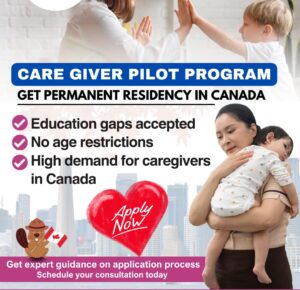🌍 Hey Everyone! Welcome Back to My Study Abroad Vlog!
Today’s vlog-style blog is all about Cyprus Study Visa 202 — one of the most underrated yet powerful study-abroad destinations for Indian students. If you’re dreaming of an affordable European education, a peaceful lifestyle, and quick visa processing, then Cyprus should be on your radar.
In today’s vlog/blog, I am taking you through:
✔ My full journey to Cyprus
✔ Student visa requirements
✔ Why Cyprus is becoming so popular
✔ Admission process
✔ Documents checklist
✔ Living experience
✔ Job opportunities
✔ Tips to avoid visa rejection
So grab your coffee, and let’s dive right into the world of Cyprus! 🇨🇾✨
🎥 VLOG START — “MY CYPRUS STUDY VISA STORY”
I still remember the day I started looking for study options in Europe. I wanted something affordable, fast, and safe. That’s when Cyprus popped up on my screen. I didn’t know much at first, but after research and talking to students already there, I realized:
👉 It’s a hidden gem for international students
👉 The visa success rate is high
👉5 bands in IELTS required
👉 Process is simple and fast
So I applied—and trust me—the journey was smoother than I expected. Let me walk you through everything I learned and experienced.
🏫 Why Choose Cyprus for Study in 2025?
Before talking about the visa, here’s why Cyprus is rising as a top study destination:
✅ 1. IELTS Required
Most universities accept students with 5 bands in English proficiency test.
✅ 2. High Visa Approval Rate
Cyprus maintains a reputation for transparent and student-friendly immigration rules.
✅ 3. Europe-like Lifestyle at Low Cost
Beautiful beaches, clean cities, European culture—everything at a budget-friendly living cost.
✅ 4. Safe Country for Students
Cyprus is ranked among the safest countries in Europe.
✅ 5. English-friendly Environment
90% of people speak English, so communication is easy for international students.
✅ 6. Quality Education
European-standard programs in Business, IT, Hospitality, Nursing, Engineering & more.
📚 Top Courses Popular Among Indian Students
During my research and talking to students in Cyprus, these courses stood out:
-
Hospitality & Tourism Management
-
Nursing
-
Business Administration
-
Information Technology
-
Engineering Programs
-
Hotel & Restaurant Management
-
Culinary Arts
-
Computer Science
Most colleges offer two intakes: February & September.
🏛 Top Colleges in Cyprus (Student-Preferred)
Students commonly apply to:
-
Cyprus International University
-
University of Nicosia
-
European University Cyprus
-
Near East University
-
American College Cyprus
-
Philips University
-
Alexander College
Each has strong student support services and modern facilities.
📄 Cyprus Study Visa Requirements (Simple & Clear)
This is the part everyone asks about!
Based on my experience, you need the following documents to apply for the Cyprus Study Visa:
1. Valid Passport
Minimum 1-year validity.
2. Academic Documents
-
10th & 12th/Diploma transcripts
-
Graduation degree (if applying for Master’s)
3. Offer Letter from Cyprus University
Once your admission is approved.
4. Medical Certificate
HIV, Hepatitis, and Chest X-ray.
5. Police Clearance Certificate (PCC)
Mandatory for all students.
6. Passport-size Photographs
7. Filled Visa Application Form
8. Bank Statements & Financial Proof
As per university guidelines.
📝 Admission Process for Cyprus (Step-by-Step Guide)
Let me explain the complete admission + visa process exactly as I went through it.
🎯 Step 1: Choose Course & University
I researched colleges based on:
-
Fees
-
Campus location
-
Course structure
-
Job opportunities
Selecting the right college is the most important step.
🎯 Step 2: Submit Application
You need to send:
-
Passport
-
Academic certificates
-
Photos
-
Application form
Universities usually respond within 5–7 working days.
🎯 Step 3: Receive Your Offer Letter
Once you get the offer letter, you can move to the next step.
🎯 Step 4: Medical Test & PCC
Get your medical test from an approved hospital and PCC from your local police station.
🎯 Step 5: Interview (Not for All Students)
Some universities conduct a short online interview to assess your communication skills. It’s very easy; just be confident.
🎯 Step 6: Visa File Submission
This is handled through the Cyprus Embassy or University-approved channel.
🎯 Step 7: Get Your Visa Approval
Most students get responses in 10–30 days, depending on intake and file quality.
🎯 Step 8: Fly to Cyprus
Once you receive the visa, book your flight, pack your bags, and get ready for a bright future!
✈️ My First Day in Cyprus — Vlog Feel
The moment I landed at Larnaca Airport, I felt like I stepped into a peaceful European paradise. Beautiful coastal views, sunny weather, friendly people—it was all welcoming.
College representatives picked me up from the airport and helped with:
-
Accommodation
-
Registration
-
Local SIM
-
Orientation
Everything felt organized and student-friendly.
🏠 Life in Cyprus for International Students
Here’s the real vlog part—what life is like after reaching Cyprus!
✔ Safe & clean cities
Walking late at night feels safe.
✔ Affordable living
Accommodation and food are cheaper compared to other European countries.
✔ Easy transportation
Buses are reliable and well-connected.
✔ Multicultural environment
Students from India, Nepal, Africa, Europe, and Middle East study together.
💼 Part-Time Jobs for Students in Cyprus
Students can work part-time during their studies depending on program rules.
Common job roles include:
-
Hotel & restaurant
-
Retail shops
-
Cafes
-
Delivery
-
Customer support
-
Sales assistant
Students often share that part-time jobs are easily available in hospitality sectors, especially during tourist seasons.
🔮 Career Opportunities After Study
Cyprus offers great prospects in:
-
Hospitality & Tourism
-
IT & Computer Science
-
Business Management
-
Healthcare & Nursing
-
Engineering
Many students move to other EU countries for career growth due to Cyprus’s European education recognition.
🚫 How to Avoid Cyprus Study Visa Rejection
Based on student experiences, avoid these mistakes:
❌ Fake or incomplete documents
❌ Incorrect medical report
❌ Lack of financial proof
❌ Misleading information on application
❌ Poor interview performance (if required)
Stay truthful and prepare your file properly—approval chances will be high.
🧭 Tips From My Cyprus Journey (Must Read!)
✔ Keep your documents organized
✔ Maintain good communication with your college
✔ Learn basic English confidently
✔ Join student WhatsApp groups before traveling
✔ Carry essential medicines
✔ Understand your course & city before applying
These small things make your journey smoother.
Final Thoughts — Should You Apply for Cyprus Study Visa in 2026?
Absolutely YES — if you want:
-
A safe European country
-
A budget-friendly lifestyle
-
A simple visa process
-
Quality education
-
English-speaking environment
-
Fast approvals
-
IELTS with 5 Bands
Cyprus is a smart choice for students looking for an affordable gateway to Europe.
This vlog-style guide is based on student journeys, real experiences, and updated visa requirements. If you are planning your education abroad, Cyprus is a strong option for 2026.




